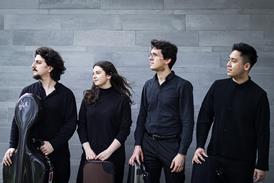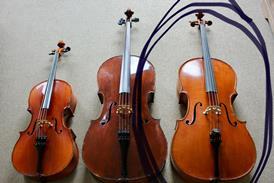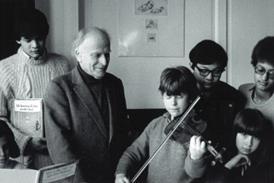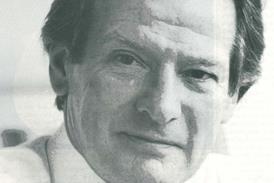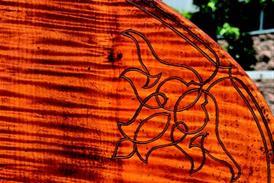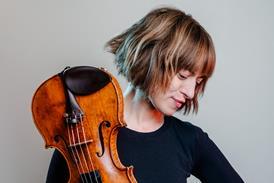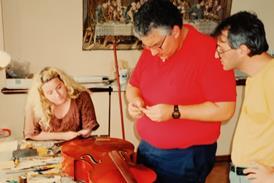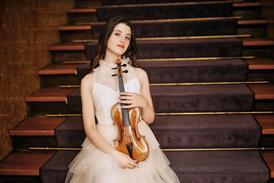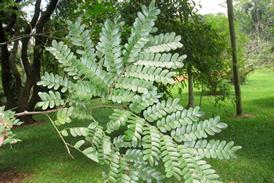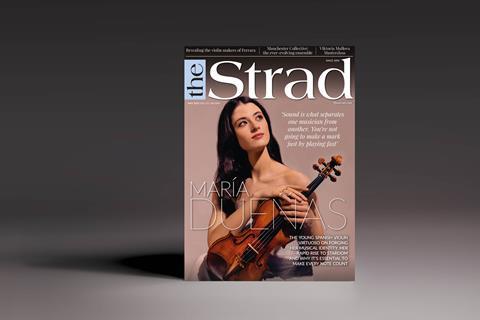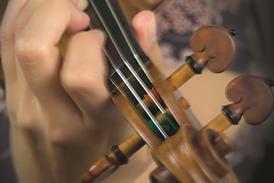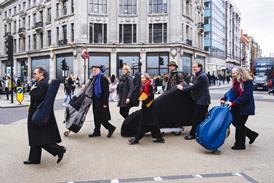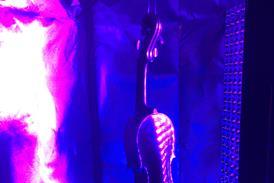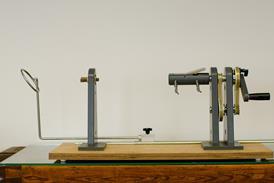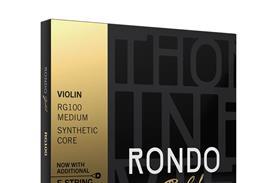Lutherie – Page 6
-
 Premium ❘ Feature
Premium ❘ FeatureIn Focus: A 1894 violin by Gaetano Antoniazzi
Sean Bishop looks at a violin by one of modern Italian lutherie’s pioneers
-
 Premium ❘ Feature
Premium ❘ FeatureMaking Matters: Instrument resonance
The tonal qualities of great instruments continue to prove profoundly enigmatic when we seek to unlock their secrets, as Martin Horvat explains
-
 Premium ❘ Feature
Premium ❘ FeatureTrade Secrets: Restoring the octagon of a violin bow
A repair method that avoids having to rebuild the whole octagon from scratch
-
 Premium ❘ Feature
Premium ❘ FeatureIn Focus: A 1669 Richard Meares bass viol
Shem Mackey takes a look at a Meares bass viol with distinctive carved head
-
 Premium ❘ Feature
Premium ❘ FeatureLuthiers sans Frontières: Beyond the limits
Peter Somerford speaks to representatives of Luthiers sans Frontières
-
 Premium ❘ Feature
Premium ❘ FeatureIn Focus: A 1701 David Tecchler cello
Julian Hersh examines a cello by the most renowned maker of the Roman school
-
 Premium ❘ Focus
Premium ❘ FocusPostcard from Oslo: ‘Master to Master’ symposium
Musicians, luthiers and experts converged on Oslo’s National Museum in February for ‘Master to Master’, Christian Lloyd reports
-
 Premium ❘ Feature
Premium ❘ FeatureIn focus: A violin by Giuseppe Guarneri ‘filius Andreae’ c.1710
Gennady Filimonov explores Giuseppe Guarneri’s c.1710 violin
-
 Premium ❘ Feature
Premium ❘ FeatureMaking Matters: Choosing the right wood
Bridge maker Milo Stamm gives his thoughts on wood selection and preparation
-
 Premium ❘ Feature
Premium ❘ Feature‘A constant exchange of knowledge’ - My Space: Julia Jostes & Simon Eberl
Take a peek into the couple’s Lübeck workshop
-
 Premium ❘ Feature
Premium ❘ FeatureThe man of property: Who was Baron Johann Knoop?
Clifford Hall tells the story of the German collector Baron Johann Knoop
-
 Premium ❘ Feature
Premium ❘ FeatureIn Focus: A 1669 Andrea Guarneri cello
Christopher Reuning takes a closer look at Andrea Guarneri’s 1669 cello
-
 Premium ❘ Feature
Premium ❘ FeatureValue judgements: What is your time and labour worth?
Benjamin Schilbach gives a guide to determining an hourly rate as the cost of living rises daily
-
 Premium ❘ Feature
Premium ❘ FeatureIn Focus: A c.1773 G.B. Guadagnini violin
Jason Price takes a look at the record-breaking ‘Sinzheimer’ violin
-
 Premium ❘ Feature
Premium ❘ FeatureIn Focus: An 1824 violin by Nicolas Lupot
Richard Ward looks at an instrument made in the last year of the French luthier’s life
-
 Premium ❘ Feature
Premium ❘ FeatureIn Focus: a c.1767 Giovanni Battista Gabrielli violin
Kai Dase takes a look at a violin by the Florentine maker
-
 Premium ❘ Feature
Premium ❘ FeatureTrade Secrets: Making purfling with fish glue
A flexible method for luthiers who prefer to make their own purfling rather than buy it ready-made
-
 Premium ❘ Article
Premium ❘ ArticleAnalysis April 2023: Brexit troubles faced by publishers and auction houses
Brexit continues to blight the UK music industry and businesses such as auction houses and music publishers are among the affected parties
-
 Premium ❘ Feature
Premium ❘ FeatureUnder pressure: Dealing with humidity
Jacqueline Vanasse asks players and experts how to deal with the challenges of changing environments
-
 Premium ❘ Feature
Premium ❘ FeatureIn Focus: A c.1798 Matthew Hardie violin
David Rattray explores the British maker’s c.1798 violin

